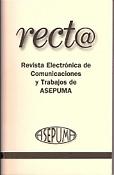Modelo de eficiencia de las terminales de contenedores del sistema portuario español
Keywords:
Eficiencia, puertos, terminales de contenedores, redes bayesianasAbstract
Ports play a role in the development of trade and in general for the country’s competitiveness, especially in the context of globalization of the last decades. Specifically in the port sector , international technological advancement has resulted in a reduction in the costs of trade between large distances. The result of these changes has been that the port sector has begun a process of rapid renewal of its facilities so that they are responsive to the demand for their services. While in the past the existence of some monopoly in a given area is identified due to the high cost involved mobilizing load an alternate port, as part of these changes have increased the possibilities of choosing different ports , thus creating an increasingly competitive environment. Port efficiency has become more important as a determinant of the cost and quality of transport, factors affecting the dynamics of foreign trade and the degree of competition that reaches a country. The purpose of this paper is to determine the stage efficiency of container terminals in the ports that make up the Current Spanish Port System . These scenarios enable port managers take appropriate measures to improve port management . For the analysis of scenarios efficiency of container terminals and by the use of probabilistic graphical models, specifically Bayesian networks, we have defined the main variables and inference is performed in virtual environments.
Downloads
Published
How to Cite
Issue
Section
License

This work is licensed under a Creative Commons Attribution-NonCommercial 4.0 International License.

